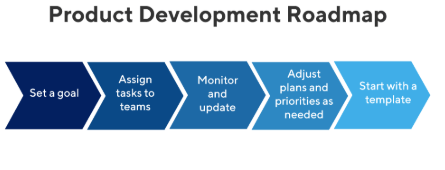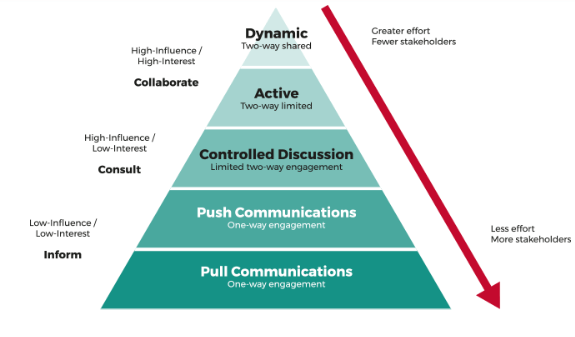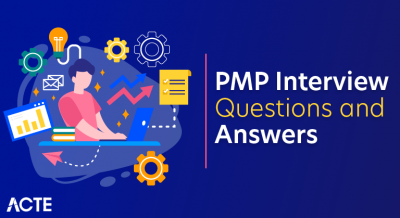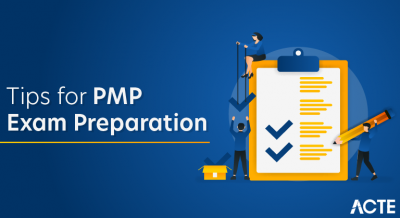
- Introduction to Product Management Functions
- Market Research and Analysis
- Product Strategy and Roadmap Development
- Defining Product Vision and Goals
- Feature Prioritization and Development
- Managing Product Lifecycle
- Collaboration with Stakeholders
- Ensuring Customer Satisfaction
- Competitive Analysis and Benchmarking
- Monitoring Key Performance Indicators
- Product Launch and Marketing
- Continuous Improvement and Iterations
Introduction to Product Management Functions
Product management is a multifaceted discipline responsible for overseeing the entire lifecycle of a product from ideation to retirement. PMP Training involves defining the product vision, conducting market research, and collaborating with cross-functional teams to ensure successful delivery and customer satisfaction. Product managers (PMs) bridge business objectives, customer needs, and technical execution. Functions of Product Management role encompasses strategic planning, execution, and continuous improvement. Effective product management is essential for delivering customer-centric products that drive business growth and maintain a competitive edge in today’s competitive market.
Market Research and Analysis
Market research is the foundation of effective product management. It helps PMs understand customer needs, industry trends, and competitive dynamics. Key aspects of market research include:
- Customer Segmentation: Identifying target audiences based on Problem Solving Framework, behavior, and preferences.
- Competitor Analysis: Assessing competitors’ products, pricing, features, and market positioning to identify gaps and opportunities.
- Trend Analysis: Monitoring industry trends to anticipate shifts in customer demands and market conditions.
- Data Collection Methods: Using surveys, interviews, focus groups, and data analytics tools to gather customer insights.
- SWOT Analysis: Identifying strengths, weaknesses, opportunities, and threats to shape product strategy.
- Outcome: Effective market research ensures that product decisions are data-driven and aligned with customer needs, enhancing the likelihood of product success.
Become a PMP expert by enrolling in this PMP Certification Training today.
Product Strategy and Roadmap Development
Product strategy defines the overarching goals and direction for the product, while the roadmap outlines the execution plan. PMs are responsible for creating and maintaining both. Product Strategy Components, Vision and Mission, Defining the long-term purpose and direction of the product. Quality Control Explained Fit Ensuring the product addresses customer needs and solves pain points. Value Proposition Communicating the unique benefits and value of the product. Roadmap Development, Prioritization Identifying and ranking features based on business impact, customer value, and feasibility. Timeline and Milestones Defining release phases, deadlines, and major deliverables. Alignment with Stakeholders Ensuring the roadmap reflects business objectives and customer expectations. Outcome A clear product strategy and well-defined roadmap guide the team in achieving product goals while maintaining flexibility for iterations.

Defining Product Vision and Goals
A compelling product vision serves as the guiding beacon for the entire team, while well-defined goals ensure measurable progress.
Product Vision:
- Long-Term Aspiration: Defines the ultimate purpose and impact of the product.
- Customer-Centric: Aligns with customer needs and Kanban can Transform your Project Management Process.
- Inspiration for Teams: Motivates and aligns cross-functional teams toward a common objective.
Product Goals:
- SMART Goals: Specific, Measurable, Achievable, Relevant, and Time-bound objectives.
- Customer-Centric Metrics: Goals focused on customer acquisition, retention, and satisfaction.
- Business Outcomes: Goals related to revenue growth, market share, or cost efficiency.
- Outcome: A clear vision and goal framework drive consistent decision-making and keep teams focused on delivering value.
- MoSCoW Method: Categorizing features into Must-Have, Should-Have, Could-Have, and Won’t-Have.
- RICE Scoring: Evaluating features based on Reach, Impact, Confidence, and Effort.
- Kano Model: Classifying features into Basic, Operations Management, and Excitement categories.
- Value vs. Effort Matrix: Prioritizing based on the potential value versus development complexity.
- User Stories and Acceptance Criteria: Defining detailed user stories and clear acceptance criteria.
- Agile Development: Collaborating with engineering teams through sprints and iterative releases.
- Prototyping and Testing: Creating prototypes for early testing and validation.
- Outcome: Strategic prioritization and development deliver features that maximize customer value and business impact.
- Engineering Teams: Collaborating on technical feasibility and feature implementation.
- Marketing and Sales Teams: Aligning on go-to-market strategies and messaging.
- Customer Support: Gathering feedback to improve product quality.
- Executives: Presenting roadmaps, performance reports, and product strategies.
- Regular Meetings: Weekly or bi-weekly syncs with stakeholders to review progress.
- Clear Communication: Using project management tools (e.g., JIRA, Confluence) for transparent communication.
- Feedback Loops: Continuous stakeholder feedback for iterative improvements.
- Outcome: Strong stakeholder collaboration ensures alignment, transparency, and successful product delivery.
- Feature Comparison: Evaluating competitors’ feature sets and Benefits of Having Shorter Sprints in Agile gaps.
- Pricing Analysis: Comparing pricing strategies to determine optimal product pricing.
- Market Positioning: Analyzing how competitors market and position their products.
- Benchmarking: Comparing product performance against industry standards.
- SEMrush, SimilarWeb: For competitor website analysis.
- G2, Capterra: For customer reviews and feedback insights.
- Outcome: Competitive analysis ensures Roadmap Development the product remains relevant and differentiated.
- User Acquisition: Number of new users or customers.
- Retention Rate: Percentage of customers retained over time.
- Conversion Rate: Effectiveness of marketing efforts in converting leads.
- Revenue Growth: Increase in sales or subscription revenue.
- Customer Satisfaction Metrics: NPS, CSAT, and churn rate.
- Outcome: Monitoring KPIs enables PMs to identify areas for improvement, Benchmarking and optimize product strategies.
Advance your PMP career by joining this PMP Certification Training now.
Feature Prioritization and Development
Feature prioritization ensures that the most impactful and valuable features are Functions of Product Management , balancing business objectives with customer needs.
Prioritization Techniques:
Development Process:
Managing Product Lifecycle
Product lifecycle management (PLM) involves overseeing the product from ideation to retirement, ensuring continuous value delivery, Lifecycle Stages Launching the product and creating market awareness. Growth Scaling and acquiring new customers. Maturity Maintaining market share and optimizing performance. Decline Retiring or evolving the product when it becomes obsolete. PMP Training Improvements Adding new features or optimizing existing ones during the growth and maturity stages. Sunsetting Phasing out outdated products while ensuring customer transitions. Data-Driven Decisions Using performance data to make lifecycle decisions. Outcome Effective PLM ensures products remain relevant, competitive, and profitable throughout their lifespan
Ready to excel in PMP ? Enroll in ACTE’s PMP Master Program Training Course and begin your journey today!
Collaboration with Stakeholders
Effective stakeholder collaboration ensures product goals Visualizing Project Timelines with business objectives and customer needs.
Key Stakeholders:
Collaboration Methods:

Ensuring Customer Satisfaction
Customer satisfaction is a primary goal of product management, as Functions of Product Management directly impacts retention and loyalty. Customer-Centric Approaches, User Feedback Regularly collect and analyze customer feedback, User Experience (UX) Improvements Enhancing usability, design, and overall experience. Support and Issue Resolution: Quickly addressing customer complaints and concerns. Metrics for Satisfaction, Net Promoter Score (NPS) Measuring customer willingness to recommend the Product managers. Customer Satisfaction Score (CSAT) Gauging satisfaction with specific interactions. Churn Rate Monitoring the rate of customer attrition. Outcome Prioritizing customer satisfaction leads to higher retention, positive reviews, and stronger brand loyalty.
Competitive Analysis and Benchmarking
Competitive analysis helps PMs understand market trends, identify opportunities, and maintain a competitive edge.
Key Activities:
Tools Used:
Are you getting ready for your PMP interview? Check out our blog on PMP Interview Questions and Answers!
Monitoring Key Performance Indicators
Tracking key performance indicators (KPIs) helps PMs measure product success and make data-driven decisions.
Essential KPIs:
Product Launch and Marketing
The product launch is a critical phase that requires meticulous planning and coordination. Launch Activities, Go-to-Market Strategy: Defining positioning, messaging, and target audience. Marketing Campaigns Coordinating with marketing teams for promotional efforts. Launch Events and Demos Showcasing the Product managers through webinars or live demos. User Onboarding Creating onboarding flows for new customers. Post-Launch Activities, Customer Feedback Gathering early feedback to make necessary iterations. Performance Monitoring Analyzing launch metrics and user adoption rates. Outcome A well-executed product launch ensures PMP Training , customer adoption, and business impact.
Competitive Improvement and Iterations
Continuous improvement is essential for refining products and maintaining competitiveness. Iteration Process, Customer Feedback Using feedback to identify pain points and improvement areas. A/B Testing Experimenting with different features to optimize performance. Agile Methodology Using agile sprints for regular, incremental product updates. Outcome Iterative improvements enhance Product managers, customer satisfaction, and market relevance.





